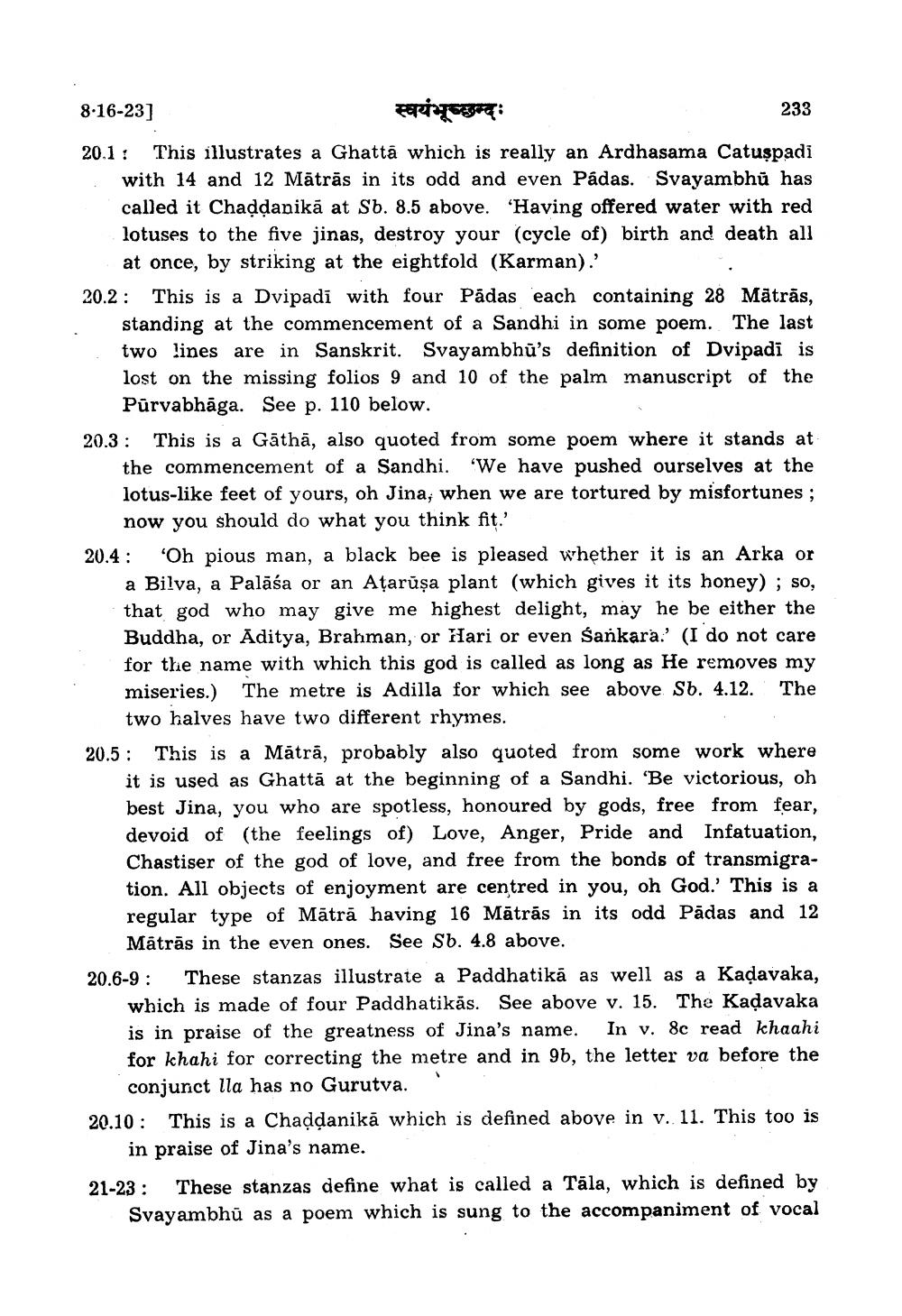________________
816-23] स्वयंभूच्छन्दः
233 20.1: This illustrates a Ghatta which is really an Ardhasama Catuspadi
with 14 and 12 Mātrās in its odd and even Padas. Svayambhū has called it Chaddanikā at Sb. 8.5 above. 'Having offered water with red lotuses to the five jinas, destroy your (cycle of) birth and death all
at once, by striking at the eightfold (Karman).' 20.2: This is a Dvipadi with four Pädas each containing 28 Mātrās,
standing at the commencement of a Sandhi in some poem. The last two lines are in Sanskrit. Svayambhu's definition of Dvipadi is lost on the missing folios 9 and 10 of the palm manuscript of the
Pūrvabhāga. See p. 110 below. 20.3: This is a Gāthā, also quoted from some poem where it stands at
the commencement of a Sandhi. "We have pushed ourselves at the lotus-like feet of yours, oh Jina; when we are tortured by misfortunes ;
now you should do what you think fit.' 20.4: 'Oh pious man, a black bee is pleased whether it is an Arka or
a Bilva, a Palāśa or an Ațarūşa plant (which gives it its honey); so, that god who may give me highest delight, may he be either the Buddha, or Aditya, Brahman, or Hari or even Śankara.' (I do not care for the name with which this god is called as long as He removes my miseries.) The metre is Adilla for which see above Sb. 4.12. The
two halves have two different rhymes. 20.5: This is a Mātrā, probably also quoted from some work where
it is used as Ghattā at the beginning of a Sandhi. 'Be victorious, oh best Jina, you who are spotless, honoured by gods, free from fear, devoid of (the feelings of) Love, Anger, Pride and Infatuation, Chastiser of the god of love, and free from the bonds of transmigration. All objects of enjoyment are centred in you, oh God.' This is a regular type of Mātrā having 16 Mātrās in its odd Pādas and 12
Mātrās in the even ones. See Sb. 4.8 above. 20.6-9: These stanzas illustrate a Paddhatikā as well as a Kadavaka,
which is made of four Paddhatikās. See above v. 15. The Kadavaka is in praise of the greatness of Jina's name. In v. 8c read khaahi for khahi for correcting the metre and in 9b, the letter va before the
conjunct lla has no Gurutva. 20.10: This is a Chaddanikā which is defined above in v. 11. This too is
in praise of Jina's name. 21-23 : These stanzas define what is called a Tāla, which is defined by
Svayambhū as a poem which is sung to the accompaniment of vocal




